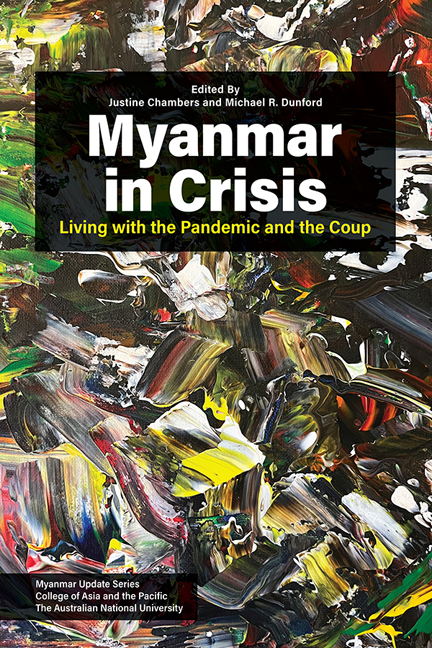7 - The CDM and its Allies: Myanmar’s HeterogeneousAnticolonial Public(s)
Published online by Cambridge University Press: 01 March 2024
Summary
On the 1st of February, the Sit Tat1 staged a coup that overthrew the democratically elected government. After a brief period of stunned silence, the country erupted with anger and dismay. From eight o’clock that evening, Yangon and Mandalay were overtaken with the sound of mass pot-and-pan banging: long a traditional symbol of casting out demons, the pot-banging was repurposed as a symbol of mass protest, couched within the plausible deniability of the traditional act of exorcism. Within a few days, such nebulous and inchoate acts gave way to a mass social movement, started by nurses and doctors. Health sector workers exhorted their fellow public servants to refuse to work for the junta; knowing that this was in violation of civil service laws (Pyidaungsu Hluttaw 2013), they knew they would likely be arrested, and — citing Gandhi — released a statement on Facebook referring to their actions as “civil disobedience”. Myanmar's Civil Disobedience Movement (CDM) was born. Teachers and other education sector staff were quick to follow health workers, joining demonstrations and releasing public statements; in a little over a week, the CDM had snowballed into a general anti-coup uprising. “CDMers,” or striking civil servants, were joined by labour unions, political activist networks, and a huge assortment of other groups and associations, forming the largest street demonstrations the country has witnessed since the mass demonstrations of 1988.
In the months that followed, “CDM” became a kind of shorthand for one's political allegiances. Striking government staff became known as “CDMers;” government staff who remained in their posts began to be called “non-CDM”. If someone is spoken about as “non-CDM,” the implication is that they are pro-junta. “Non-CDM” workers (and even their families) were identified online and recommended for a tactic that came to be known as “Social Punishment” (SP): the public (or online) harassment and ostracism of those non-CDM workers, particularly soldiers, and often their families as well, with particular focus on shutting down or boycotting militaryaligned businesses. As long-time Myanmar observer and anthropologist Courtney Wittekind puts it, “neutrality is no longer possible” (2021) in post-coup Myanmar. A side must be chosen.
- Type
- Chapter
- Information
- Myanmar in CrisisLiving with the Pandemic and the Coup, pp. 159 - 182Publisher: ISEAS–Yusof Ishak InstitutePrint publication year: 2023

